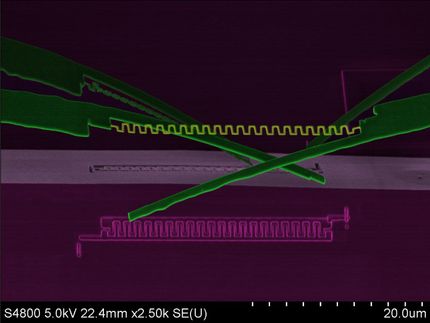Hydrazine has nowhere to hide
Scientists in the US and Korea have developed a highly sensitive fluorescent probe that can detect a toxic chemical used in industrial processes in a variety of different environments – including living cells.
Hydrazine is used in in many different applications – as the gas-forming agent in air bags, in power plants to reduce corrosion and even as fuel for satellites and rockets. But care must be taken when using it as it is highly toxic to humans.
The new sensor uses a naphthalimide derivative that binds specifically to hydrazine and undergoes a hydrazine-induced cyclisation, which causes a visible colour change. The scientists showed that this on-off fluorescent response could be used to selectively detect hydrazine in water and air. They also showed that the sensor is sufficiently biocompatible to detect the chemical in living cells.
Other news from the department science

Get the analytics and lab tech industry in your inbox
By submitting this form you agree that LUMITOS AG will send you the newsletter(s) selected above by email. Your data will not be passed on to third parties. Your data will be stored and processed in accordance with our data protection regulations. LUMITOS may contact you by email for the purpose of advertising or market and opinion surveys. You can revoke your consent at any time without giving reasons to LUMITOS AG, Ernst-Augustin-Str. 2, 12489 Berlin, Germany or by e-mail at revoke@lumitos.com with effect for the future. In addition, each email contains a link to unsubscribe from the corresponding newsletter.























































